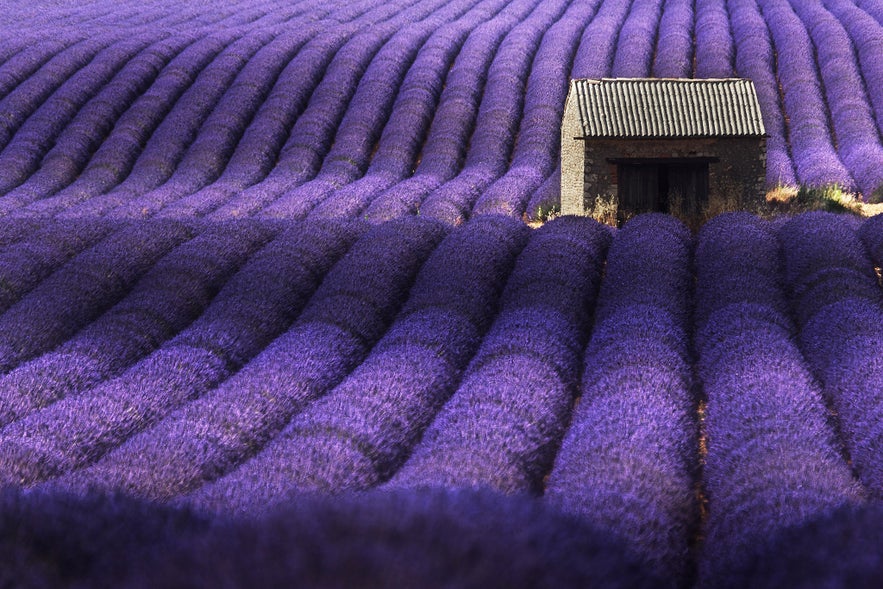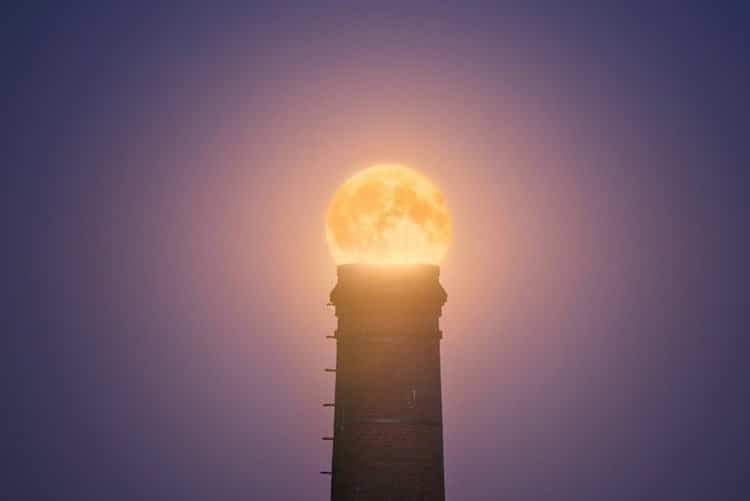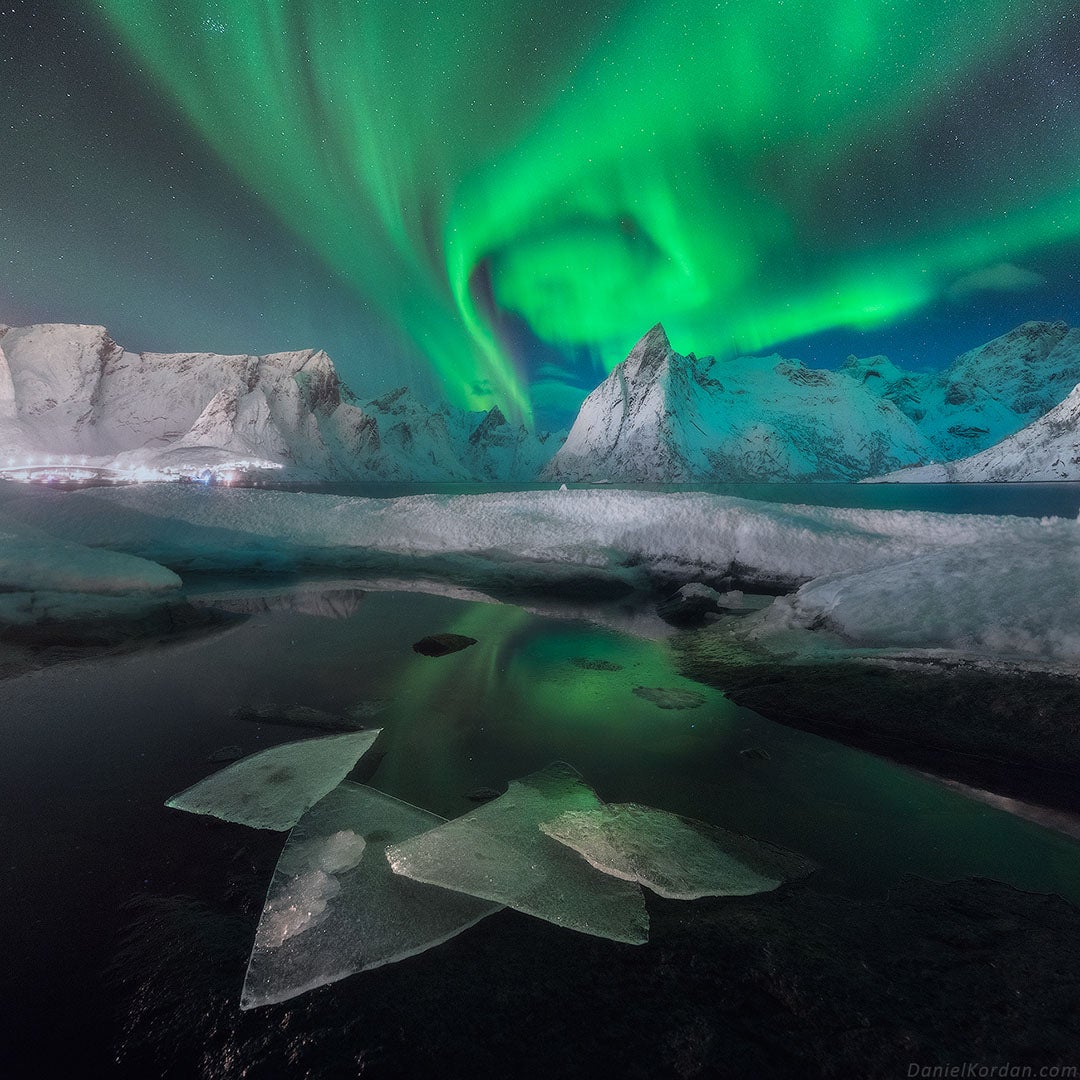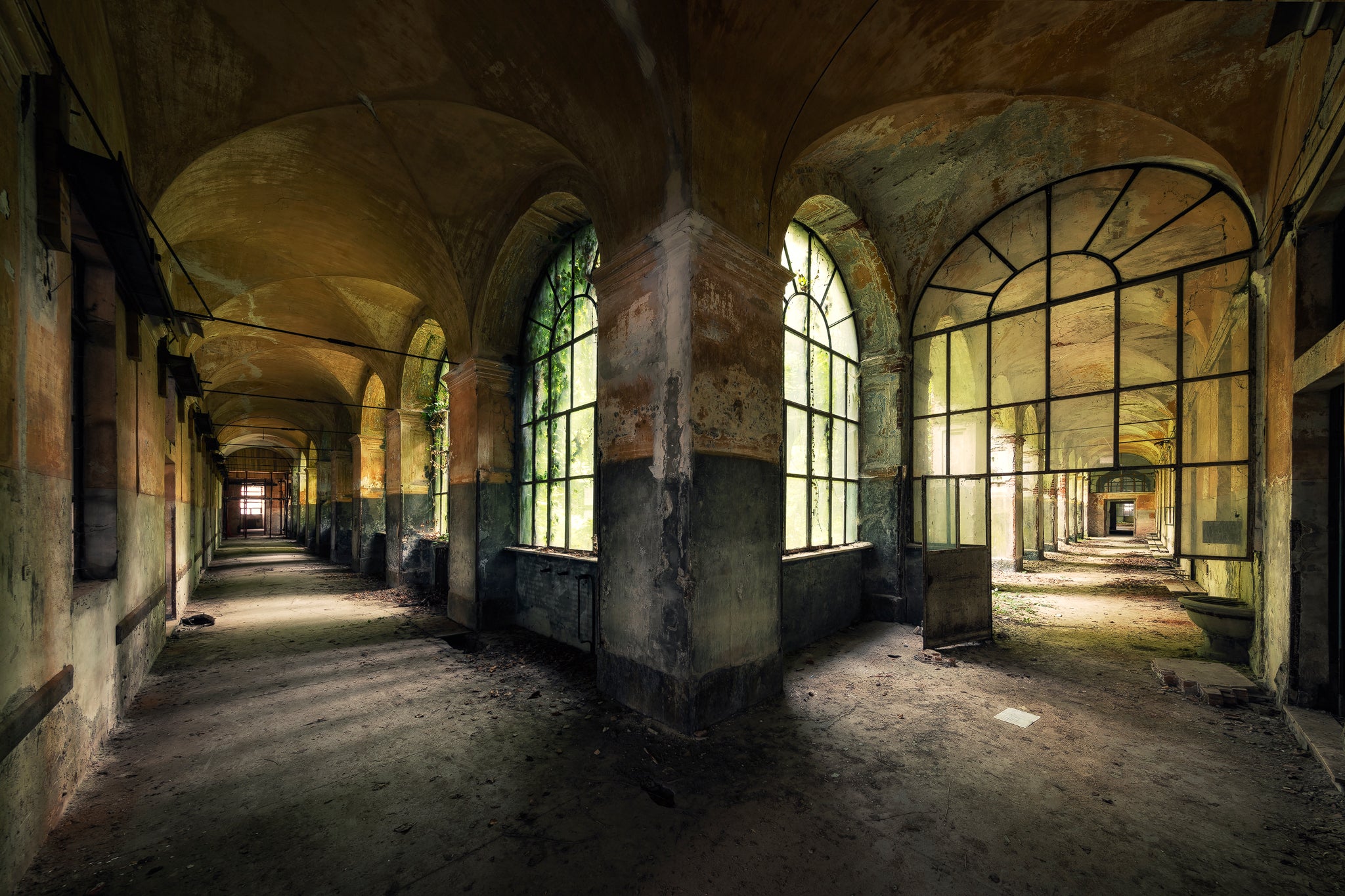
Every year, during a relatively short window of time, something magical happens in the south of France, in a region called Provence, millions of lavender’s flowers bloom all together, creating a visual contrast that is spectacular to say the least.
- Join us on this Provence Paradise | 6 Day Photo Tour in France
- Learn these Recommended Camera Settings for Landscape Photography
As I just said, the right word to describe the emotions that you feel when you travel in Provence (especially for the first time) still needs to be invented. It’s a complete sensory experience: you’ll smell the strong and sweet fragrance of the lavender’s flowers, you will see endless violet fields and you will have the chance to walk through them.
It doesn’t matter where you live in the world, it’s totally worth it to travel to Provence during the right time of the year to see the lavender fields blooming; those views and that scent will stick in your head as a beautiful memory for a very long time, trust me.
The History of the Lavender Fields of Provence
Originally, the lavender plant was imported to France by the Greeks around the sixth century BC. Though they imported it, the Romans were the ones who started to extract the essential oil from the plant and use it to bathe. They gave it the name of “lavender”, from “lavare” in Latin, which means “to wash”.
 The lavender fields are a complete sensory experience. Photo by: 'Leonardo Papèra'.
The lavender fields are a complete sensory experience. Photo by: 'Leonardo Papèra'.
As centuries passed by, the use of lavender as a medicinal herb grew exponentially; by the 14th century, the plant had a vast series of uses, from healing simple headaches to treating much more serious health problems. Soon, the word about its miraculous effects against diseases had spread and some merchants even swore that lavender warded off viruses like cholera and plague.
 Lavender used to be cut in the wild, though these days it is cultivated in France. Photo by: 'Leonardo Papèra'.
Lavender used to be cut in the wild, though these days it is cultivated in France. Photo by: 'Leonardo Papèra'.
With a steadily growing demand for lavender, many families started to earn their entire income from the harvest of this plant. At first, lavender wasn’t cultivated but just cut in the wild, with harvesters starting to work in June and ending in August, since the flowering times were different depending on the locations.
From around the first decades of the 20th century throughout, many lavender cultivations started to appear in the south of France, all around the region of Provence.
Later during the same century, farmers started to cultivate also the “lavandin”, a man-made hybrid variation (less expensive) of lavender, and the first methods of mechanical harvesting appeared.
When to Photograph Provence Lavender Fields
The lavender plants in France bloom every year from June to August, depending on the area: the flowering will start in June in the lower (and warmer) regions and then later in July and August in the mountainous regions.
In Provence, specifically in the most famous zone to which everybody travels, the blooming happens between the last two weeks of June and the first ten days of July, depending on the temperatures of the current year.
If I had to recommend a specific week to go there, I would say to visit Provence across the last days of June and the first of week of July: if you travel there during this period, you shouldn’t have to worry about not seeing the blooming lavender fields.
 The last days of June are the best time to travel to France to photograph lavender fields. Photo by: 'Leonardo Papèra'.
The last days of June are the best time to travel to France to photograph lavender fields. Photo by: 'Leonardo Papèra'.
Camera Equipment for Lavender Photography
The mild summer weather of Provence is great for your photography equipment: you won’t have to battle strong winds, snowstorms or rain showers. In fact, most of the days will be warm and sunny. This means that you won't need a weather-sealed camera, lenses or tripod; you can take your trustworthy equipment and hit the road!
 A full-frame camera is required for lavender photography. Photo by: 'Leonardo Papèra'.
A full-frame camera is required for lavender photography. Photo by: 'Leonardo Papèra'.
As a landscape photographer (and since you will mostly shoot landscapes or nightscapes in Provence), I’d recommend to have with you a full-frame camera and at least a wide-angle lens (something around 14mm-24mm), possibly bright enough to allow you to shoot during the night (so, at least with an aperture of f/2.8).
A telephoto lens is required too if you want to capture some pictures like the one above: the long focal range will “compress” the depth of field of the landscape and will allow you to play a lot with the textures created by the lavender fields. If you want to rest assured, then take along at least a 300mm lens.
If you want to shoot in low light conditions, a decent and sturdy tripod is necessary. When I say “low light conditions”, I mean during sunset, sunrise, blue hour, as well as during the night. Since I’m quite sure that you'll want to shoot during those times, be sure to pack a good tripod for the trip!
Filters can be useful too but for a trip to Provence, they aren't usually the first thing that I put in my bag honestly. If you are lucky enough the get some passing clouds in the sky at the golden hour, then you will definitely be able to use filters for a long exposure, otherwise there isn’t much more that filters can add dynamically to your shots.
 Filters may not add that much in terms of creativity to your shots. Photo by: 'Leonardo Papèra'.
Filters may not add that much in terms of creativity to your shots. Photo by: 'Leonardo Papèra'.
- See also: Camera & Gear Reviews
Recommended Camera Settings for Photographing Lavender
Now let’s talk a little bit about the settings you should use when photographing the lavender fields.
Shutter Speed & Exposure Time
The first thing that you'll want to keep in check is that the flowers are not blurry and the camera is not shaking: to avoid these two things, you should use fast enough exposure times to get a photo where everything is frozen and sharp.
When shooting in low light, your tripod will be your best friend as it will allow you to use a slower shutter speed without worrying about moving your camera. Even though you'll be shooting on a tripod, you'll still need to shoot with a fast enough exposure time in order to have all the flowers be still and sharp.
Aperture
About the aperture, there are two ways to go:
-
The classic way is to use a narrow aperture to have as much as possible in focus. For this, I mean that you should set your aperture anywhere between f/8 to f/16. I generally prefer to stay in the middle – around f/11 is my go-to setting when photographing the lavender fields of Provence.
 Use a narrower aperture to have as much of the lavender in focus as possible. Photo by: 'Leonardo Papèra'.
Use a narrower aperture to have as much of the lavender in focus as possible. Photo by: 'Leonardo Papèra'.
-
The creative way is to use a wide aperture to get some nice bokeh effect in the foreground or in the background, which suits some scenes perfectly in a place like Provence (check the photo below for an example). If you are aiming for this bokeh effect, use the widest aperture of your lens, like f/4, f/2.8 or even f/1.8.
 A wider aperture is great for creating bokeh. Photo by: 'Leonardo Papèra'.
A wider aperture is great for creating bokeh. Photo by: 'Leonardo Papèra'.
ISO
As always in landscape photography, try to keep your ISO as low as possible when shooting. Shooting on a tripod will help a lot here in enabling you to use the lowest possible ISO. Generally, I try to always stay at ISO 100 from sunrise to sunset. The only way I manage to do this is by placing the camera on the tripod.
Things will be a bit different if you'll be shooting the Milky Way at night over the lavender fields in Provence. In this case, you'll want to get at least one shot using a super high ISO (around ISO 6400) to capture the Milky Way. In the case that there is a full moon in the sky, you won't need to raise the ISO that much, as you will have enough light to stay around ISO 800.
These settings are just starting points, since it’s impossible to give you the precise ones that you should use in every situation. However, from these suggested parameters, you should try to take a few pictures and find the perfect settings for your own circumstances.
 You'll need a high ISO for night photography in the lavender fields. Photo by: 'Leonardo Papèra'.
You'll need a high ISO for night photography in the lavender fields. Photo by: 'Leonardo Papèra'.
Where to Go to Photograph Lavender in Provence
Until this moment, I have always talked about going to shoot lavender in “Provence”, but the truth is that this region is quite big and you’ll need a bit more information to plan a successful trip there. As such, I'll tell you precisely where you should go if you want to visit those endless violet fields of which you have seen photos everywhere online.
Valensole Lavender Fields
All of the most famous lavender fields are in a relatively small area, around a cosy village called 'Valensole'. All the pictures that you have seen so far in this article were taken no more than within a 15km radius from the town.
In and around Valensole, you’ll find all the biggest and most beautiful lavender fields, together with some lonely trees and some old ruins here and there; the whole place seems like it’s been created for photographers, you just couldn’t ask for anything better.
As you can see from the map down here, the few photography spots that I have personally saved on my Google Maps are all in close proximity to Valensole; the ones that you see are just the most famous though, there are many others that you will find just by exploring the roads of that zone.
 Map of where to photograph lavender fields in Provence. Photo by: 'Leonardo Papèra'.
Map of where to photograph lavender fields in Provence. Photo by: 'Leonardo Papèra'.
Even the most famous locations have no names here, so I’ll give them a name that I think fit the subject of the shot as much as possible.
The House with a Cypress
 The house with a cypress. Photo by: 'Leonardo Papèra'.
The house with a cypress. Photo by: 'Leonardo Papèra'.
This is one of the best photography spots for lavender in Valensole. The straight lines of lavender bushes lead the eyes to the house and are just perfect for a beautiful composition.
The best time of the day to shoot here is sunrise. Be sure to get there quite early though in order to bag yourself the best spot, since the place can sometimes get a little crowded.
To get to this location, simply follow the D8 road. You'll find it 5 minutes outside Valensole going north. On the map above, it is the northern pin-pointed dot.
The “Angelvin” Two Famous Trees
 The Angelvin Two Famous Trees. Photo by: 'Leonardo Papèra'.
The Angelvin Two Famous Trees. Photo by: 'Leonardo Papèra'.
These two trees are probably the most famous spot in Provence for lavender field photography. As with the previous location, the patterns of the flower lines here are what really makes the difference in compositions and what contributes to making your shots look so beautiful.
The photo above was taken at sunrise, when the sun was rising from behind and bathing all of the flowers in a glow. At sunset, you'll get the sun setting right in front of you, so if you there are some nice colours in the sky, I’d say that the evening is the best option.
It’s really easy to find this location: you follow the D6 road towards west from Valensole and after less than five minutes, you’ll pass a big farmhouse called “Angelvin”. These trees are next to this house.
The Old Ruined House in the Lavender Fields
 The old ruined house in the lavender fields. Photo by: 'Leonardo Papèra'.
The old ruined house in the lavender fields. Photo by: 'Leonardo Papèra'.
This spot is a little bit harder to find because you won’t be able to see it from the road. You’ll have to get out of the car and take a few steps to understand if you are in the right place. You will find this spot on a crossroad, 15 minutes north of Valensole, between the D8 and the D953.
Personally, I would recommend to be here at sunrise, since you’ll have the first light of the day hitting the fields from the side, creating some beautiful contrasts. As you can see from the picture above though, even the harsh afternoon light can treat you with some sweet contrasts if you happen to capture passing clouds over the fields.
To take the classic composition, you will need a lens that can go up to 300mm or 400mm, since you’ll be shooting from far away.
 You'll need a telephoto lens for this composition. Photo by: 'Leonardo Papèra'.
You'll need a telephoto lens for this composition. Photo by: 'Leonardo Papèra'.
Best Conditions for Photographing Lavender
Well, there is no surprise here: the best conditions to photograph lavender fields are generally when the sun is low on the horizon and the light is warmer. This often occurs during sunrise and sunset. However, take into consideration that during summer in Provence, sunrise and sunset times may be really early or really late, so be prepared to wake up at 4 a.m. in the morning and to finish shooting at 10 a.m.
Be aware though that if you happen to be blessed with some interesting sky, with a few rolling clouds or even a storm, then what would otherwise be a boring afternoon could turn out to be the shooting session of a lifetime! During these conditions, you might end up taking the best shots of your entire trip. Storms and clouds really help to bring out the vibrancy of the lavender, so be sure to head out to shoot, even if it seems like it might rain.
Don’t forget about night photography: if you are passionate about astrophotography, the area around Valensole is a nice place to capture the Milky Way (or just some starry skies) during a clear summer night. Check out the rising and setting times of the moon beforehand, then go out accordingly. Try a few shots with the moon in your frame, like the one below. You might be surprised by the result!
 Night time is a great moment for photographing lavender with the moon and the stars overhead. Photo by: 'Leonardo Papèra'.
Night time is a great moment for photographing lavender with the moon and the stars overhead. Photo by: 'Leonardo Papèra'.
Tips for Post Processing Lavender Photos
Let's talk for a minute about editing lavender pictures because there is one big thing that needs to be discussed before you open your RAW files at the PC. It's the saturation. Please, keep that slider under control. Since the lavender naturally has violet/magenta/blue hues, it’s very easy to end up with an oversaturated image if you play too much with the colours and contrasts.
My suggestion is to leave the scene as natural and soft as possible; considering the fairytale enchantment and romance of the landscape, I wouldn’t go too hard on the contrasts, unless you are aiming for some specific effect.
Try to enhance the source of light by using a dodge and burn layer on Photoshop. That will help to give the shot a more impressive look without overdoing it.
 Don't get too heavy with the contrast and colours when processing images of lavender. Photo by: 'Leonardo Papèra'.
Don't get too heavy with the contrast and colours when processing images of lavender. Photo by: 'Leonardo Papèra'.
- See also: Photography Tutorials
Other Destinations to Visit in Provence
So far, we've just been focusing all of our attention on the Valensole area and the lavender fields around there, but you should know that it’s not the only place to visit when you go to Provence.
Provence is full of charming old towns that resemble paintings, as well as some beautiful rivers and canyons for nature lovers.
Gordes
 The village of Gordes. Photo by: 'Pxhere'.
The village of Gordes. Photo by: 'Pxhere'.
Gordes is one a quaint, small village that is located close to Avignon and is a 2 hour drive away from Valensole.
One of the most peculiar characteristics of this place is that the whole town was built with stones – that’s what all the houses are made of and what makes the place so interesting.
This town is considered one of the prettiest in the entirety of France... and just so you know, France is not an ugly place. So, it is worth a visit? Of course it is!
If you plan to visit Gordes, then be sure to make a stop at the beautiful 11th century castle, one of the main city attractions.
If you’re visiting for photography reasons, then head outside of town along the road to get the best possible viewpoint, with the whole town in the frame and the landscape below.
Abbaye de Senanque
 Abbaye de Senanque. Photo by: 'Hubert Tabutiaux, Wikimedia Commons'.
Abbaye de Senanque. Photo by: 'Hubert Tabutiaux, Wikimedia Commons'.
You will find Abbaye de Senanque near Gordes, if you drive a little bit less than 2 hours from Valensole, going towards Avignon.
Built in the 12th century, this abbey is worth a visit for sure since there is a beautiful lavender field just in front of it, so the contrast between the two subjects and the surrounding landscape is fantastic.
L’Isle sur la Sorgue
 L'Isle sur la Sorgue. Photo by: 'Georges Seguin, Wikimedia Commons'.
L'Isle sur la Sorgue. Photo by: 'Georges Seguin, Wikimedia Commons'.
This is a gorgeous little village which is known as the Venice of Provence”. L’Isle sur la Sorgue literally translates to “The Island on the Sorgue”. It was named for the fact that the entire town was built on a river! In fact, this place is famous for its water-wheels and canals, giving it a startling similarity to the Italian city of Venice. It’s also known for its antiques and farmers markets that regularly take place in town.
If you are stopping by L’Isle sur la Sorgue to take a few pictures, be sure to have some neutral density filters with you, as it's the perfect place for some long exposures of the canals running between the town streets!
Gorges du Verdon
 A vulture in Provence. Photo by: 'Leonardo Papèra'.
A vulture in Provence. Photo by: 'Leonardo Papèra'.
The Gorges du Verdon is the biggest canyon in Europe. It is 50km long with some crevasses almost 700 metres deep!
You can find this spot quite easily close to Valensole, an hour away from the town.
If you love to stay out in nature, then there are endless activities to do here: hiking, biking, rafting, canoeing or snorkelling are just a few of the things on offer. So if you are looking for some action, then this is the right place for you!
In terms of photography, this is the best possible place to see the vultures of Provence – a huge bird of prey that you will see flying above the canyon and, if you are lucky, really close to you!
There are many roads that lead to viewpoints all over the canyon, so you should be able to get to the top for a prime position to watch these birds from above.
 The vultures are spectacular in flight. Photo by: 'Leonardo Papèra'.
The vultures are spectacular in flight. Photo by: 'Leonardo Papèra'.
- See also: Wildlife Photography
How to Get to Provence
I would love to tell you that Valensole is well-connected with all the major cities around, that there are many coaches/trains/taxis that will take you there, or at least an airport close by... but the truth is that Valensole is more or less in the middle of nowhere.
Of course, you will not be in the wilderness but you will at least be way off the main tracks in the French countryside.
The nearest big city to Provence is Avignon, which is a 2 hour drive away. The only way to visit Provence is by car. If you'll be travelling to France by plane, then you can easily rent a car at one of the nearest airports in Avignon or Marseilles.
Getting to Provence is one beautiful drive, trust me. You'll visit some old cosy villages and finally, you'll see the endless lavender fields!
There are not many hotels in Provence and since the time when the flowering of Lavender occurs is considered the highest season of the year, most of the hotels will be booked out many months beforehand.
 Provence is not that easy to get to! Photo by: 'Leonardo Papèra'.
Provence is not that easy to get to! Photo by: 'Leonardo Papèra'.
Now, if you want to save yourself the hassle, all things considered, why not join us in our Provence Paradise Photo Tour?
You won’t have to think about a single thing, from planning the trip to finding the right hotels close to where you'll want to shoot. This tour is specifically designed for all the passionate photographers out there who want to be at the best locations during the right time of the year for photography in the lavender fields.
A local expert and professional photographer will follow you step-by-step during this wonderful adventure, giving you the chance to learn many new photography skills and techniques along the way. You will visit the most famous spots around Valensole as well as many other hidden gems and towns, such as Aix-en-Provence and Marseilles.
Be sure to check out the link to discover the itinerary and all the other info!
 The lavender fields of Provence are a dream destination for many photographers. Photo by: 'Leonardo Papèra'.
The lavender fields of Provence are a dream destination for many photographers. Photo by: 'Leonardo Papèra'.
If I haven’t been clear enough during this article, then I'll say it now: You should definitely visit Provence. The visual contrast that you’ll enjoy during your trip here is something that can hardly be described with words: those lavender fields pop out from the rest of the landscape in a truly incredible way. The lavender perfume will surround you during your stay, while the sound of a million bees buzzing from flower to flower will hum you to sleep for many days.
As I said at the beginning of this article, Provence during the lavender season is a sensory experience, so pack your stuff and get ready for a fragrant adventure!
About the author: Leonardo Papèra is a landscape photographer based in Italy. You can find more of his work on his website or by following him on Instagram.
Immerse yourself in the beauty of the lavender fields of France. Capture all of the enchantment on this magical 6 Day Photography Workshop to Provence!











